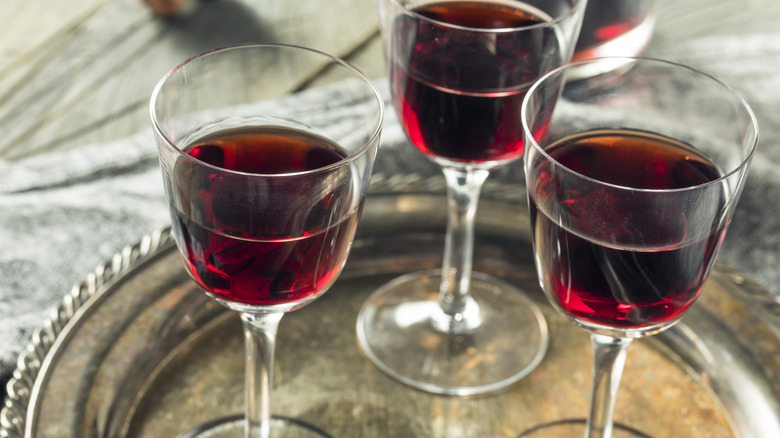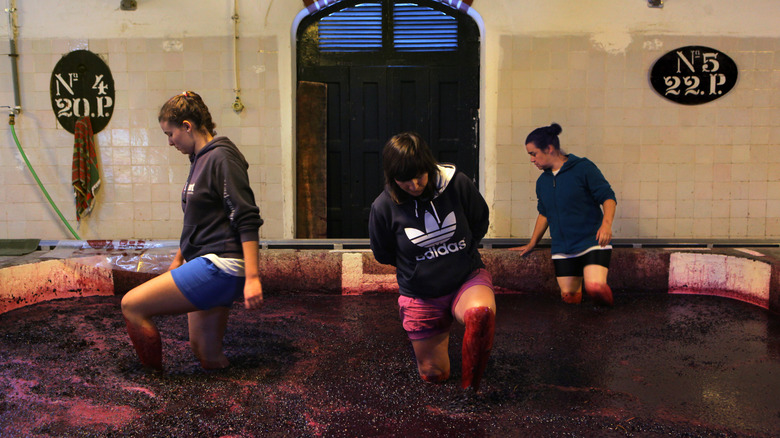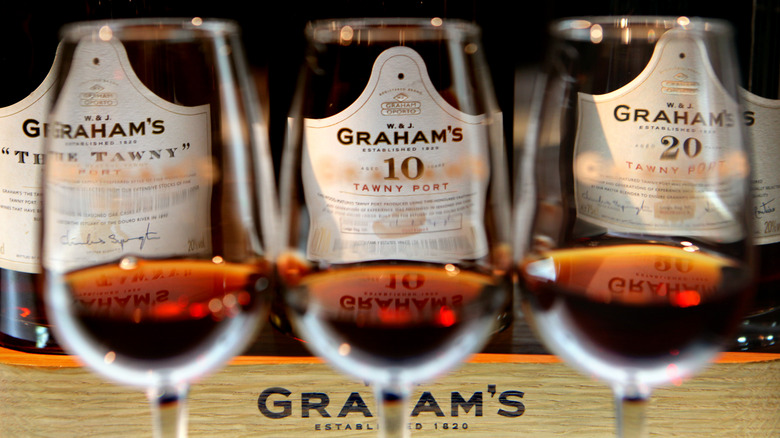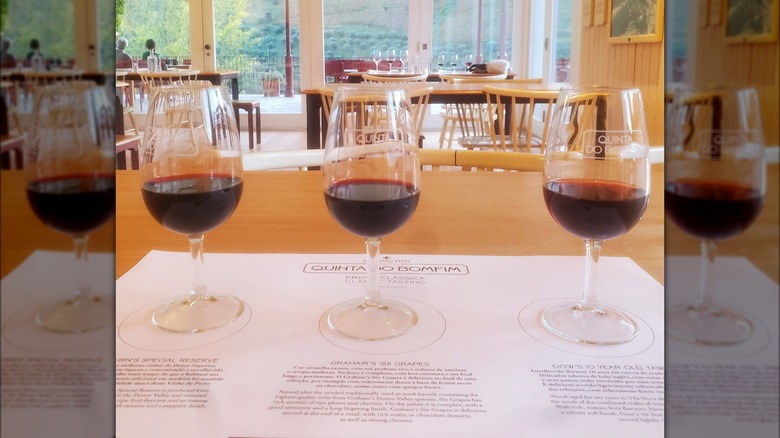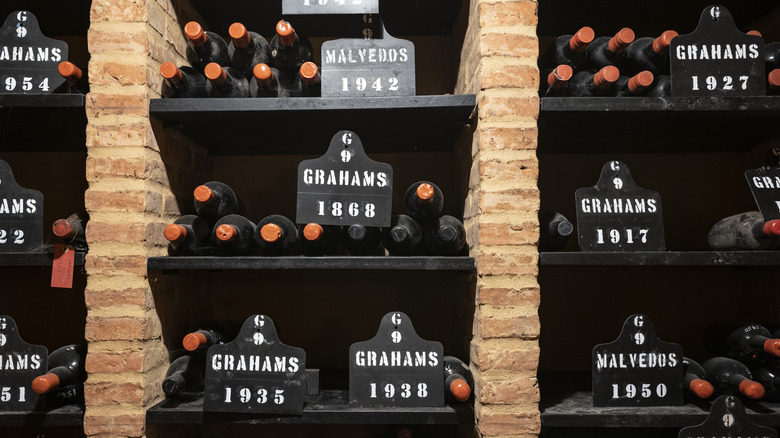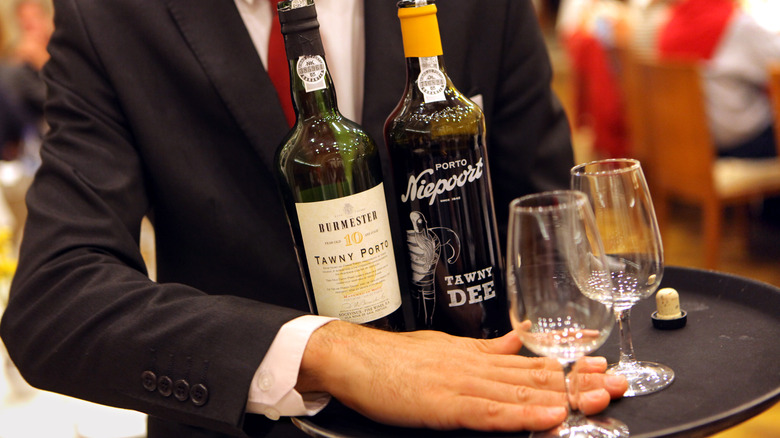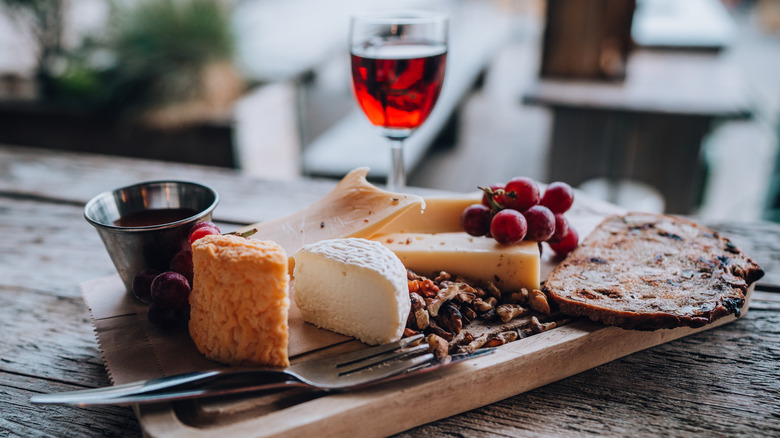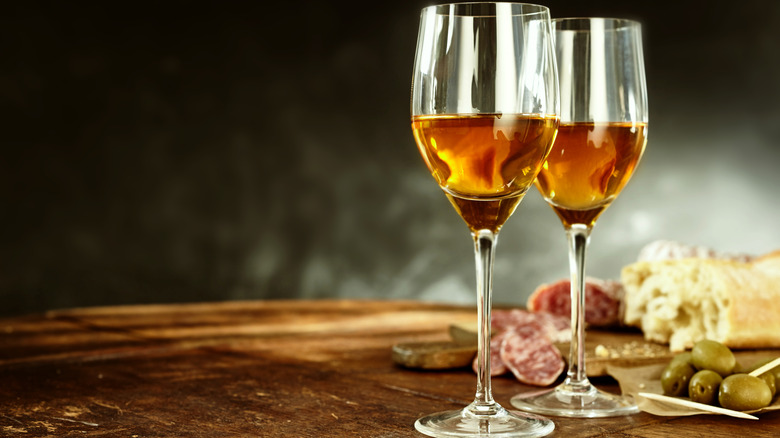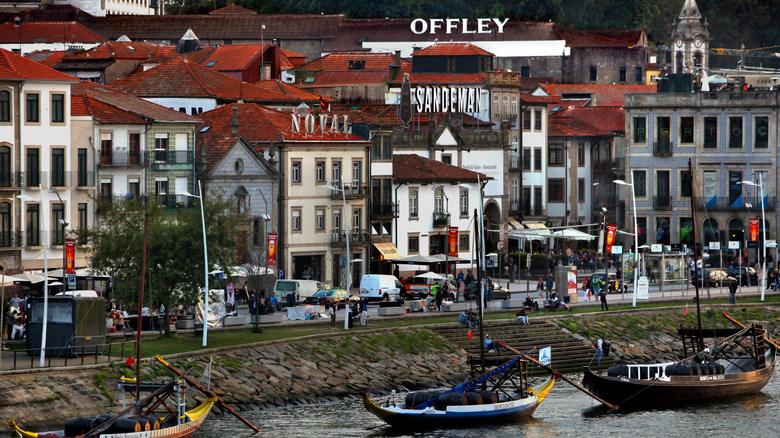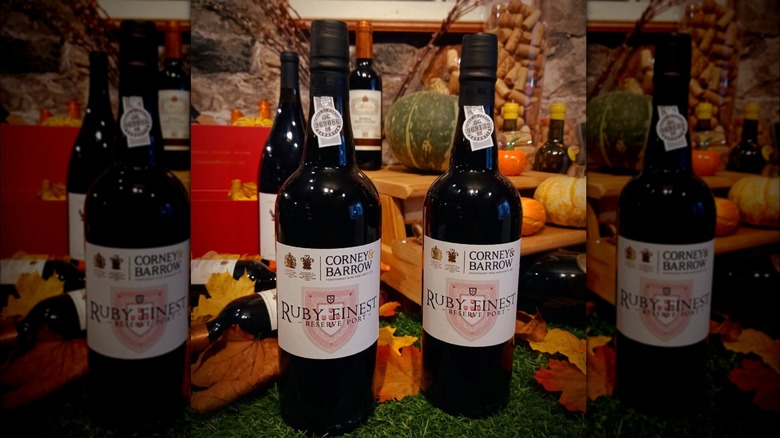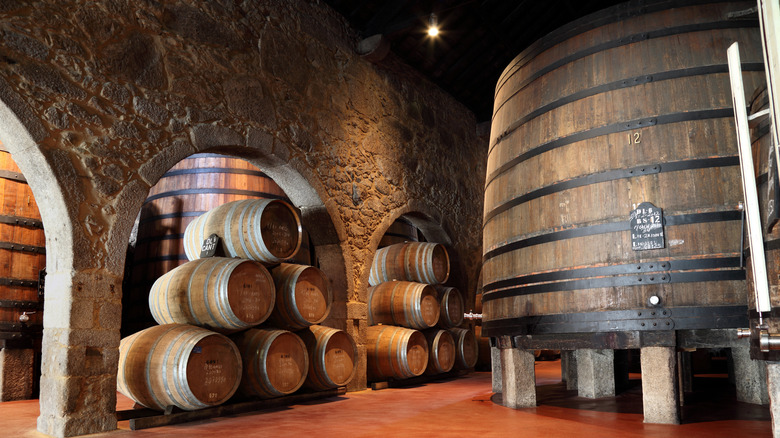Port: The Ultimate Bottle Guide
Produced in Northern Portugal, port is a fortified wine increasingly enjoyed worldwide, with sales of over $900 million in 2022. With estimates more than doubling these figures within the next 10 years, it's about time consumers became more familiar with the renowned beverage.
Wine lovers should get on board first with port since it's also made with grapes. And if you like an extra kick in your drink, the fortification process takes the alcohol content up a notch, hovering between 16% and 20% ABV. Still, the essence of wine shines through in each sip, making port a versatile drink to sip with dessert or even enjoy in a cocktail.
With various types of ports on the market, as well as a vast range of price tags, it's worth understanding the nuances of the different styles to enhance your enjoyment. From jammy ruby ports to nutty tawnys, the world of port is diverse. After visiting Quinta do Bomfim in the Douro Valley, I discovered plenty more about this timeless drink, fine-tuning my palate in the process.
History of port production
The vineyards of the Douro Valley that now produce famous ports were originally planted by the Romans. However, the rich and complex fortified wine as we know it only came later. As with many products, port was developed out of necessity to prevent spoilage. With vineyards mostly located inland along the Douro River, by the time the wine arrived in the city of Porto by ship it had seen better days. To improve results, the wine began being fortified with brandy before the journey by boat. (Nowadays, the fortification process occurs during the fermentation, producing a well-balanced wine with nuanced flavors.)
In the late 1600s, the British and French were at odds, so the English needed to look elsewhere to satisfy their wine needs. Already involved in commercial trade with the Portuguese over the past centuries, they began to import fortified wines, AKA port. Eventually, a few wineries in Portugal were even founded by Englishmen, leading to the centuries-long tradition that continues to this day. In the mid-1700s, the Douro Valley became the first European wine region to receive DOC status, a controlled origin designation to ensure authenticity and quality.
Presently, port wine grapes grow in the Douro Valley where they ferment and mature for a few months before being transported by road to Vila Nova de Gaia. Located across the river from Porto, the town is home to port producers where the wine is bottled and aged before being sold.
How is port made?
Port may differ from standard table wine, but they share the same production foundations. The Douro Valley consists of three primary regions, each with conditions ideal for certain grapes, of which about 30 can be used to produce port. The most common ones you'll find are Touriga Nacional, Touriga Francesa, Tinta Roriz, Tinta Barroca, Tinta Amarela, and Tinta Cão — which you likely won't see far beyond a bottle of port. Meanwhile, if you try white port, it's probably made with a blend of Malvasia, Rabigato, and Viosinho.
Once the grapes reach optimal maturity, they are harvested by hand due to the valley's steep terrain. After being sorted, the grapes are transferred to large rectangle vessels known as "lagares" (picture a high wading pool), where they are crushed following traditional or modern methods. In the former, cellar workers climb into the lagares, gently and evenly stomping on the grapes to maximize the juice while avoiding over-extracting the tannins from the skins and seeds. Modern setups use machinery to perform this time-consuming task, though the manual work is considered superior.
Eventually, fermentation begins and alcohol is produced. Partway through the natural process, winemakers add grape spirits to the juice to initiate the fortification process and stop fermentation, resulting in a sweet wine with a higher alcohol content. Then, it's all about patience while the wine matures before being blended and bottled for the market.
What are the main types of port?
If you tried port once and weren't into it, it's worth sampling a different style, as each is unique. The most common bottlings on the market include Ruby, Tawny, Vintage, Late Bottled Vintage, and white. Others such as 50-year-old and Very Very Old Port (VVOP) have more recently been accepted as categories and are great for special occasions.
Per their name, ruby ports feature a brighter red color and are fruity and young on the palate. Depending on the subtype, a blend of various vintages is aged for two to three years in large oak vats. Reserve wines spend between four and six years maturing, as do late bottled vintages (which are made with a single vintage harvest). Meanwhile, vintage ports only age for two years before bottling, but continue to mature in the bottle for decades.
In contrast, tawny ports boast a darker brown and oxidized color, thanks to a minimum of three years (and often far longer) spent aging in smaller oak barrels. You'll find them labeled based on the number of years in oak — with the price tag to match. Tawn port is bottled at its peak and ready to drink, so don't let it sit around much longer.
As for white port, aside from various aging regimens, it can also be bottled with different levels of sweetness. From brighter fruit flavors to more complex honeyed notes, it offers something to suit all tastes — even if you're making cocktails.
What does port taste like?
Considering the various grape varieties, aging vessels, and aging durations, it's fair to say port covers a broad range of flavors. Ruby port is prized for its youthful taste, which translates to vibrant fruits like cherries and berries on the palate. Balanced by soft spices, a high acidity, and a chocolatey undertone, ruby is an easy crowdpleaser.
Reserve or late bottled vintages develop complex aromas through aging, paving the way for more layered flavors and floral notes. Vintage ports can vary a fair deal since they are made using grapes from a single harvest, highlighting the yearly conditions. Tawny, on the other hand, is softer thanks to the oxidation that occurs while aging in barrels. Over time it develops a nutty taste with dried fruit, caramel, butterscotch, and vanilla flavors. With warm spices in every sip, it lends itself to more contemplative drinking.
White port offers a spectrum of flavors depending on the aging characteristics. Younger styles are fresher with fruity notes of lemon, apples, and stone fruits. Aged bottles tend to have notes of nuts, toffee, and honey, as well as almond and vanilla if the oak is more prominent.
Why are there large variations in price?
Given the wide range of how different types of ports age, it follows that the cost can fluctuate significantly. Wines that spend little time in oak before being bottled and sold create immediate income for producers, whereas those that age for decades just take up precious cellar space. Consequently, wines that can be released more quickly tend to be more affordable, while those that take up winery real estate have a price tag to match.
Ruby ports usually land on the less expensive end of the spectrum since basic styles are ready to sell within two years. Meanwhile, reserve or vintage ports are a little pricier as they are made with premium grapes from a single harvest year. Additionally, they are usually aged in bottles for several years before being sold. If you buy a Vintage bottle upon release and continue to age it yourself, it can eventually become a worthy investment.
Tawny ports, on the other hand, vary in price based on the time spent aging in barrels. A standard tawny aged for a few years in oak will be quite affordable, whereas wines that spend upwards of 40 years in oak cost more. Ultimately, there is a port wine for all budgets. It boils down to choosing the style that suits you.
How to serve port
If your only experience with port is a neglected bottle at the bottom of the pantry, it's fair to say you may not have given it the best chance to shine. Serving port need not be complicated, and a few tips can improve the overall experience. For starters, different styles and ages do best with certain temperatures. White port is commonly served between 50 and 54 degrees Fahrenheit, either in cocktails or on the rocks with a splash of tonic. Rosé port can be a smidgen cooler, making for a refreshing aperitif.
As for ports made with red grape varieties, a warmer temperature is ideal to avoid emphasizing the tannins. Tawnys can be lightly chilled around 57 to 61 degrees, while rubys (standard and vintage) benefit from a bit more warmth between 61 and 64 degrees. While you can skip pulling out a thermometer, placing the bottle in the fridge for 20 minutes or so before serving will bring out a pleasant balance.
If your cabinet storage is limited, serve port in a standard wine glass. However, if you regularly drink this fortified wine, it might be worth purchasing port glasses, which are smaller. This ensures a pour of around 3 ounces, an optimal amount for savoring the wine without being overwhelmed by the alcohol and sugar content. If you're serving a vintage port that has been aged for more than 15 years and contains sediment, decant it first. It's also worth learning about port tongs and how they can be used to open bottles of port wine.
What to serve with port
Considering the many styles of port, it offers a multitude of directions when pairing it with food. For starters, white port is commonly served as an aperitif, either on ice, mixed into a cocktail, or with tonic. In this case, enjoy it with salty snacks, light cheeses, and cured meats. It also works well with delicate seafood dishes and salads. Less common but increasingly produced is rosé port, which makes a stellar aperitif option as well.
Meanwhile, ruby and tawny shine as dessert wines thanks to their residual sugar. With its fruity palate, ruby makes a great pairing for berry-based desserts. It is also the prime port match for chocolate; pair a chilled glass of ruby port or a late bottled vintage with a few truffles or a slice of flourless chocolate cake as a decadent treat. And if you prefer a cheese course to round off a meal, ruby is a natural complement to a wedge of crumbly blue.
Tawny features more oxidative aromas and nuttiness, which pair well with desserts of a similar profile. Salted caramel, toffee, crème brûlée, apple pie, and pecan pie are some tasty options. Or keep it simple with a few pieces of dried fruit and a handful of nuts. As for cheese, the nutty taste partners nicely with a rich and creamy slice of Brie.
Port vs. other fortified wines
If you're unfamiliar with the world of fortified wines, they can all blend together. Nevertheless, each is distinct and offers unique flavors thanks to different grape varieties and production methods. Port may be Portugal's most famous fortified wine, but Madeira sales are increasing, with its highest sale value ever occurring in 2022. Produced on the Madeira archipelago off the northwestern coast of Africa, this fortified wine features native grapes and is made in four main styles, ranging in sweetness. Interestingly, this wine is heated to caramelize the grape sugars, resulting in complex flavors.
In neighboring Spain, Sherry, a similar but different wine, reigns as king of the local fortified wine. Produced with a few main grapes, it can be dry or sweet. More interestingly, Sherry can be aged in contact with oxygen or protected by a layer of yeast, each infusing the beverage with specific flavors, from salty to nutty to sweet. The aging process also involves a rotating system of barrels known as a solera, ensuring that every bottle is a blend of multiple vintages.
Vermouth is another grape-based fortified wine that's commonly added to various cocktails such as negronis, martinis, and Manhattans. It consists of two main categories — red and white — but can be further broken down into a spectrum of sweetness. The additions of flavors like roots, herbs, and spices further expand the possibilities of the vermouth's final taste.
Why do port houses have English names?
Since port's origins trace back to when the English first started adding brandy to wine to produce it, it should surprise no one that the British led that consequent innovation. Thanks to an important trade agreement between Portugal and England, they continue to collaborate to this day. Wine merchant Peter Bearsley is believed to be the first to make it to the Douro Valley, paving the way for the foundation of the now-renowned Taylor Fladgate winery (resulting from a vineyard purchase by his son). Other British families followed suit, leading to the establishment of several wineries in the region, including Dow's, Cockburn, and Symington Estates.
At the end of the 1800s, numerous vineyards in the valley (and in Europe) were destroyed due to phylloxera, an insect that ruined the rootstocks. Local farmers were left with very little, prompting many British merchants to swoop in to purchase and reestablish the vineyards. A large number of port wineries continue to be family-owned, showcasing generations of dedication to what the land of the Douro Valley has to offer.
How have production methods changed in the last decades?
Port production has long been a labor of love, including growing and hand-harvesting grapes on rugged steep terrains, manually stomping the grapes, transporting wine along the river, and aging it for many years. While certain steps of the process continue to this day, a number have been facilitated due to advances in technology. Much of the harvest still needs to be done by hand due to vineyard layouts, however, grapes are transported by road and machinery is commonly used to sort grapes and ensure only the best are included in the wine.
Foot-treading remains the most desirable method for producing smooth wines devoid of harsh tannins from the seeds. However, this traditional method has been replaced by machinery in many wineries. Instead of employing people to stomp the grapes, a machine passes through the large vats, carefully crushing the fruit with an even pressure. Nevertheless, the traditional way is still optimal and used for finer ports — when there are enough workers.
Aside from limiting the need for more manpower, modern vats are temperature-controlled which allows a closer management of the fermentation process. This proves especially important with port production since fermentation occurs rapidly and the wine must be fortified once the sugar reaches the desired level.
How is the IVDP (port and Douro Wine Institute) involved in regulating production?
As the first European wine to be declared a controlled designation of origin product, port faces many regulations regarding its production. From the vineyards to the wineries and cellars, every step of the process must follow specific guidelines. Each region has its own authority, and port falls under the port and Douro Wine Institute (IVDP). This governing body guarantees the quality and authenticity of the product, to ensure that port maintains its standards and recognition worldwide.
Geographically, the various regions and boundaries of the Douro Valley are determined by the IVDP, which monitors the location of areas under vine. The zones — categorized for their soil, climatic conditions, and geological properties — all together paint a picture of the demarcated Douro region. In turn, these specific features are the foundations for the resulting wine, thanks to the terroir's unique characteristics.
As for the winemaking aspects, first and foremost port is made by adding brandy to the grape must to stop fermentation. A range of sweetnesses is permitted, and the final wine needs to contain an ABV between 19 and 22%. Finally, the wine must be aged according to the desired style, either in the bottle or in oak barrels. The color of the wine is also regulated and must fit somewhere on the spectrum between light gold and dark red.
What happens to port casks when they are too old for port aging?
Oak barrels are an integral element of port production, notably for tawny styles, which spend between a few years and multiple decades aging in the vessels. Oak imparts flavors to the wine, ranging in intensity depending on its age. New toasted barrels are first used for table wines, adding a vanilla-spiced aroma. As the barrels gain some wear after a few years, the notes become more subdued and can be used for port. At this point, the barrel's properties are mainly focused on the benefits of slow oxidation, which rounds out the wine and smoothens out the tannins.
Eventually, port producers swap out their used barrels for new ones, reinitiating the cycle once again. At this point, the casks are commonly sold to whisky distilleries. Each type of ports infuses its flavors into the barrels, ultimately having a different influence on the whisky's taste. From fruitier aromas to hints of nuts and caramel, the final whisky tells a layered story.
